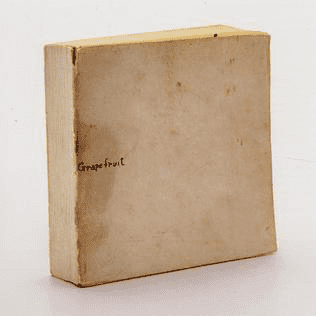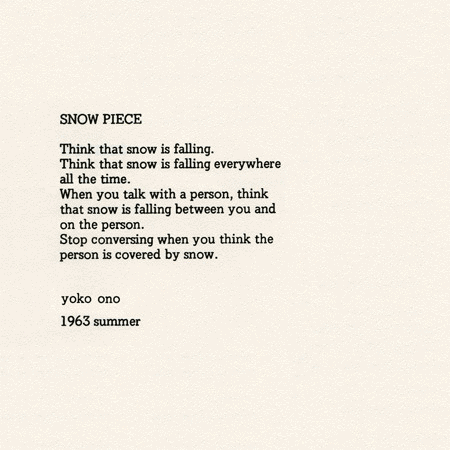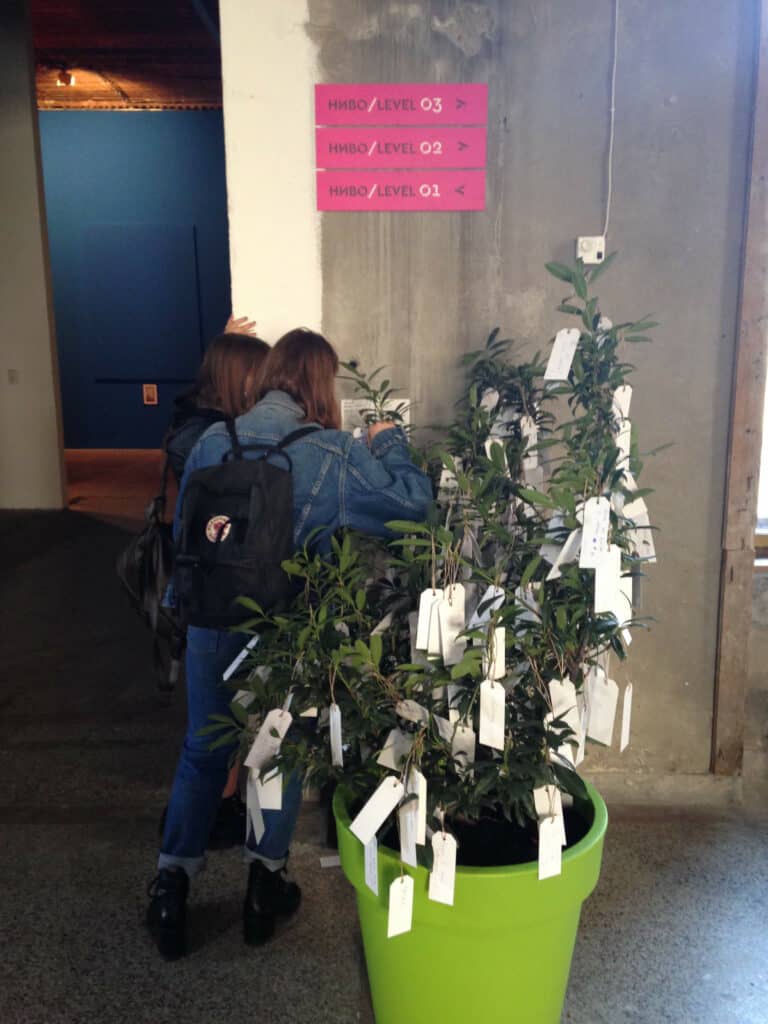Articles and Features
Female Iconoclasts: Yoko Ono

By Shira Wolfe
“Art is like breathing for me. If I don’t do it, I start to choke.”
Yoko Ono
Who is Yoko Ono?
Artland’s article series “Female Iconoclasts” celebrates female artists who were among the most boundary-breaking iconoclasts of our time; women who defied social conventions in order to pursue their passion and contribute their unique vision to society. The focus of this week’s edition is Yoko Ono, the famous multidisciplinary contemporary artist, but also musician and peace activist who made significant contributions to Fluxus, conceptual art and performance art. Her “Bed-in for Peace” with late husband John Lennon remains one of the most famous performative peace actions of all time, and her feminist messages continue to inspire people around the world today.

Biography of Yoko Ono
Event Scores and Instruction Paintings
Yoko Ono was born into a wealthy banking family in Tokyo in 1933. Her father had been a concert pianist but gave this life up to become a banker. Ono herself studied piano from a young age and in 1951 when her family moved to the United States, she enrolled at Sarah Lawrence University to study composition. By 1956, she had dropped out of college and moved to New York with her first husband, the avant-garde pianist and composer Toshi Ichiyanagi. During her time at Sarah Lawrence, Ono started writing what she called “Event Scores”, which were brief, poetic instructions for performances anyone could enact. Her Lighting Piece from 1955 reads like a haiku:
Lighting Piece:
Light a match and watch till it goes out.
1955 autumn.
This work echoes themes that would remain central to Ono’s artistic practice for the rest of her life: the ephemeral, the performative, a resistance to commodification and materialisation, art in accordance with everyday life events, self-empowerment, participation, multi-sensual and the permanently unfinished, open-ended nature of art. Ono’s “Instruction” pieces would continue to form the core for her performances, films and objects. With them, she invites her audience to experience the art as she does, while at the same time acknowledging that each person’s experience is different.
Ono’s Instruction Paintings, usually based on her Event Scores, are meant to be completed by the viewer. For example, in Painting to Hammer a Nail In (1961/1966), a hammer on a chain hung from a wooden panel, and a jar of nails was placed on a chair below it. Viewers were invited to hammer a nail into the panel, and when the surface was completely covered, the artwork was considered finished. Another example is Painting to be Stepped On (1960), which read: “Painting to be stepped on: Leave a piece of canvas or finished painting on the floor or in the street. 1960 winter”
At the beginning of her career, while living in a loft in lower Manhattan, Ono often staged poetry readings and musical performances which attracted many avant-garde figures. One night in 1960, Peggy Guggenheim came by with Marcel Duchamp and Max Ernst. Apparently, Duchamp stepped on Ono’s Painting to be Stepped On but didn’t notice.


Conceptual Art and Involvement with Fluxus
Ono is an early pioneer of conceptual art, positioning the idea over the object. This is clearly recognisable in her Event Scores and Instruction Paintings, which led to her seminal piece of conceptual art Grapefruit, a book first published in Tokyo in 1964. The book is a collection of Ono’s Instruction Paintings, and these works of art are to be completed either literally or in the imagination of the reader. In 2013, Ono released a sequel to Grapefruit, another book of instructions titled Acorn.
Ono has been associated with Fluxus. Fluxus was a loose international artist collective founded by Lithuanian-American artist George Maciunas and including the likes of Joseph Beuys, who wanted to integrate art and everyday life. Maciunas admired Ono’s work and gave her her first solo exhibition at his AG Gallery in New York in 1961. She received a formal invitation to join the Fluxus group but declined since she preferred to remain independent from groups and collectives. She did collaborate with various Fluxus artists during the 1960s and 1970s.
Yoko Ono and Performance
Performance has often been a key element in Ono’s work. One of her most important performance pieces is Cut Piece, which she first performed in Kyoto, Japan in 1964 and has re-performed over the years (other artists around the world have also re-performed the piece). During the performance, Ono would invite audience members to cut away pieces of her clothing with a pair of scissors, while sitting quietly on a stage. Her instructions required the performer to wear their best clothes and allow them to be cut away. Therefore, the performance became quite expensive for Ono, who didn’t have much money during the ‘60s. Emotionally, the piece was very intense as well to the point that Ono described the experience as “a form of giving, giving and taking. It was a kind of criticism against artists, who are always giving what they want to give. I wanted people to take whatever they wanted to, so it was very important to say you can cut wherever you want to. It is a form of giving that has a lot to do with Buddhism… A form of total giving as opposed to reasonable giving…”
“Yoko Ono is the world’s most famous unknown artist: everybody knows her name, but nobody knows what she does.”
John Lennon

Yoko Ono and John Lennon: Bed-In
In 1969, Yoko Ono married John Lennon. The couple collaborated on many different artistic projects, ranging from music to performance and visual art. Their most iconic and influential performance piece is Bed-In for Peace, which they first held at the Hilton Hotel in Amsterdam for two weeks during their honeymoon in 1969, and then did again at the Queen Elizabeth Hotel in Montreal. These were meant as nonviolent anti-war protests in light of the ongoing war in Vietnam. Lennon and Ono invited reporters into their hotel bedroom to publicise their bed-in and opposition to the Vietnam War.

The couple continued with their anti-war messages in December 1969, when they rented prominent billboard space in 12 major cities for their War is Over! campaign. The billboard messages read: “WAR IS OVER! / IF YOU WANT IT / Happy Christmas from John & Yoko.” Their song with the same lyrics came out around that time as well.


Participatory Art
A great proponent of participatory art, Ono often includes elements in her artistic practice to involve other people and inspire active participation. In her Mend Piece (1966), people are invited to sit together at a table and repair pieces of broken crockery glue, tape, thread and scissors. The new objects that emerge from this process are then displayed on nearby shelves. As such, Mend Piece offers a small gesture towards healing a damaged world.
Wish Tree is another important participatory piece that recalls the Shinto temple trees of Ono’s childhood. Since 1996, Ono has brought this piece to various exhibitions and institutions around the world. It is a simple but poetic and powerful work of art: a tree is placed in the exhibition space, with writing materials and paper tags beside it. Visitors are invited to write their personal wish on a paper tag, and attach it to the branches of the tree. The piece invites people to imagine a better future together. Ono’s instructions are as follows:
Make a wish
Write it down on a piece of paper
Fold it and tie it around a branch of a Wish Tree
Ask your friends to do the same
Keep wishing
Until the branches are covered with wishes.

Late Work
During the 1980s, Ono further broadened her practice, exploring the medium of bronze in sculptural works and creating public artworks like the Imagine Peace Tower (2007), a beam of light projected into the night sky over Reykjavík, Iceland every year from John Lennon’s birthday until the day he died. In 2009, Ono revived the Plastic Ono Band, the band she formed with John Lennon in 1969, together with their son Sean Lennon. Today one of the most popular contemporary artists, boasting an eye-watering net worth, she continues to exhibit, perform and speak worldwide and remains an important voice in activism.
Where to find Yoko Ono’s work?
Yoko Ono’s multidisciplinary work has been featured in numerous exhibitions at key galleries and museums across the world. In 2013, on the occasion of the artist’s 80th birthday, a large retrospective of her work, Half-a-Wind Show, opened at the Schirn Kunsthalle Frankfurt and travelled to Denmark’s Louisiana Museum of Modern Art, Austria’s Kunsthalle Krems, and Spain’s Guggenheim Museum Bilbao. Two years later, the Museum of Modern Art in New York hosted Yoko Ono: One Woman Show, 1960–1971, a major show to explore Ono’s seminal works, bringing together approximately 125 of her early objects, works on paper, installations, performances, audio recordings, and films, alongside rarely seen archival materials from the first 11 years of her extensive career.
Relevant sources to learn more
Museum of Contemporary Art Australia
MoMA
Walker Art Center
Explore the work of other contemporary artists whose ideas and practices have greatly influenced the times we live in:
Marina Abramovic
Joseph Beuys
Louise Bourgeois
Sophie Calle
Dan Flavin
Guerrilla Girls
Damien Hirst
Jenny Holzer
Yayoi Kusama